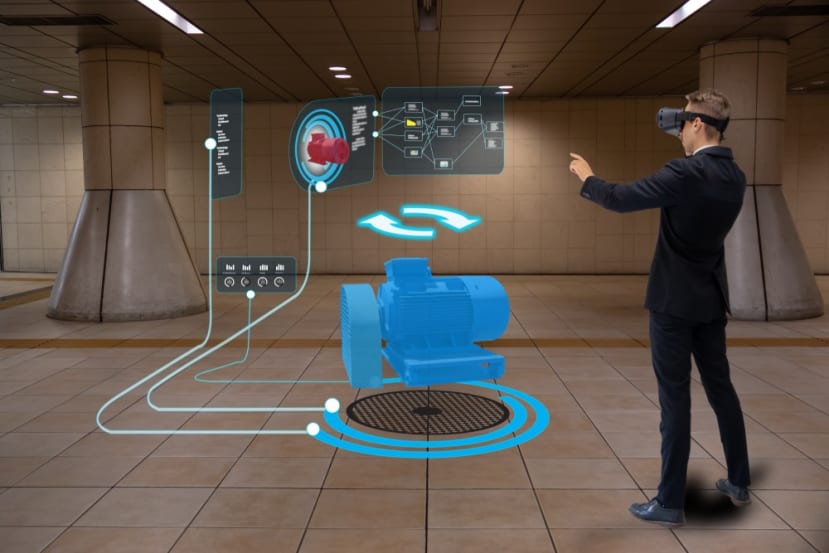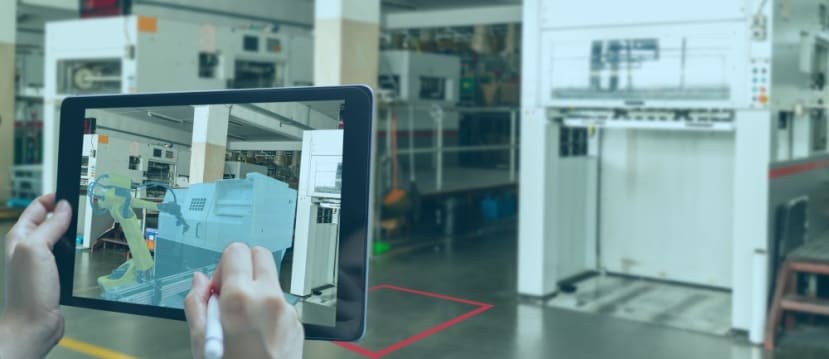6 HMI Trends Engineers Need to Know
Follow articleHow do you feel about this article? Help us to provide better content for you.
Thank you! Your feedback has been received.
There was a problem submitting your feedback, please try again later.
What do you think of this article?
Engineering talent is challenging to find and retain. One 2018 report shows that the engineering and manufacturing skills gap could cost the U.S. economy $2.5 trillion over a decade and see 2.4 million jobs go unfilled.
The reason is simple — Industry 4.0 is expanding rapidly and disrupting every sector on earth. Manufacturing companies have a lot to gain from Industry 4.0 and the Internet of Things. Still, it’s hard to take advantage when it takes three months to fill engineering positions and two months to onboard new production workers.
Modern human-machine interface (HMI) design is both a cause of these talent shortages and a potential remedy. As manufacturers work to incorporate Industry 4.0 technologies into their facilities, including more advanced HMI, they need engineers to navigate the transition. At the same time, new trends in HMI are helping those same engineers work more quickly and effectively.
Here’s a look at some of those trends.
1. Interface Control
The Internet of Things provides unprecedented ways to gather data from and interact with smart machines and instruments. However, all of this data is useless without an intuitive and detailed way to react to it.
In the earlier days of human-machine interface design, interface controls often consisted of little more than pushbuttons and LEDs. While there's still a place for these basic interfaces in some manufacturing facilities, modern HMI design is quickly moving on.
With pushbuttons and LED indicators, engineers or operators can receive alerts from equipment and turn functions on and off. Modern interface control, though, offers something much more powerful. Whether running on full Windows workstations or embedded devices with screens, engineers have powerful tools at their fingertips now.
Instead of binary alerts and fundamental interactions, modern HMI design provides charts, data tables and graphics that allow much more fine-tuned control and more detailed insights. In other words, instead of receiving an alert that a machine has failed, an engineer can instead use HMI interface controls to see where exactly the fault occurred and why — and then take action through the interface.
2. Conversational UI
Conversational UI and natural language processing (NLP) has already staked its claim in areas like chatbots, personal assistants and dictation software.
Instead of using keyword phrases or performing manual searches for data, conversational UI takes the cognitive burden off the user, often sidestepping GUIs entirely. Instead, engineers and operators can interact with their machines much more naturally — by using the written or spoken word.
True conversational interfaces have far more powerful applications in manufacturing and engineering than has yet been realized with chatbots or smartphones. Even so, the concept is similar in both the consumer and commercial worlds.
It saves a few seconds to ask Siri or Google something like, “How’s the weather today?” For engineers working with manufacturing equipment or other assets, there’s a great deal more data to sift through. “How’s the weather?” instead becomes, “Why did this machine fail?” or “Show me the condition of this part.”
Interface control through HMI is already a powerful tool, but using natural language to interact with assembly and material handling machines could save lots of time. In manufacturing, more than most industries, time is money.
3. Mixed Reality
Mixed reality incorporates elements of augmented reality (AR) and virtual reality (VR). This combination allows engineers and others to work with realistic digital models in a safe environment and/or overlay data, objects or instructions overtop the real world.
There are several examples of how mixed reality can deliver powerful results in a manufacturing setting:
- Inspectors can walk through a factory and receive detailed, visually useful condition and process data for each connected machine and component without laying a hand on the equipment.
- Technicians and engineers with AR headsets can access instructions and manuals directly in their field of vision as they conduct repairs or perform assembly duties.
- Mixed reality can function as a powerful collaboration tool. An engineer equipped with mixed reality can show other parties precisely what they’re looking at and receive guidance, even if they're in a remote location.
4. Future Screens and Graphics
Human-machine interface design is nothing without a powerful canvas for interacting with machines and diving into data sets. The trend in HMI design today is to use large, bright and colorful LCDs. These displays offer a wealth of information never accessible before, whether as part of a computer workstation or an embedded IoT controller.
Soon, these screens might not be screens at all.
One way this change may come to fruition is through holographic technology. Holographic human-machine interfaces use projections of information along with digital facsimiles of physical controls, such as buttons and keyboards, to provide the user with a suite of tools that don’t exist in the real world. The user instead, types or perform gestures in the air.
So-called blind HMI design provides a different set of tools and opportunities. Instead of using a fixed-in-place computer terminal or a built-in LCD screen to interact with a machine, the HMI component instead provides interactivity through tablets or other mobile devices. The benefit here is that the manufacturer has more options for form factors and displays — including, for example, portable, flexible displays and rugged tablets.
5. Wearable UI
Wearable UI is related to augmented reality, but it exists in a class of its own. Wearable UI may include:
- Augmented reality glasses like Google Glass and Microsoft’s HoloLens. Using the engineer’s own range of vision instead of a screen provides almost unlimited potential to display information and digital controls.
- Worn devices such as gloves, wristbands and watches can track the user’s movements on multiple axes, allowing them to control a computer interface without touching a screen.
- Hearables are in-ear devices that provide voice-based interactivity between engineers and machines. These devices may include known trigger phrases to wake the machine so that it listens for instructions.
6. Enabling Technologies
Telemedicine is perhaps the most exciting recent demonstration of a human-machine interface at work. It’s also a prime example of enabling technology — or a technology that expands the capabilities or safety of the user. In 2019, a surgeon performed the first successful robotic surgery using a low-latency, high-speed 5G connection.
The stakes are a little lower in manufacturing than in surgery, but not always by much. Plus, some of the same enabling technologies have applications in both.
Amazon made news by patenting a wearable device for warehouse employees that provides haptic feedback. The user receives guidance to the correct bin location through a gentle tap on the wrist. The same idea applies to engineers performing diagnostics and repairs or production specialists carrying out detailed work on an assembly project.
Enabling technologies for HMIs also provide the means for remote parties to engage in analysis and troubleshooting or receive alerts from connected equipment. They’re also instrumental in automating key processes, such as the ability to receive advance warning for low inventory levels no matter where in the facility the operator may be at the time.
Some enabling technologies make use of real-time data to provoke a response. Manufacturers can equip vehicles, heavy machinery and employees with RFID tags to create a sense of spatial awareness. If an employee strays from their machine or into the path of a moving vehicle, this may trigger the vehicle to brake or the equipment to halt its operation.
Designing HMI With the Future in Mind
These six trends represent major opportunities to take human-machine interactions to the next level. The HMI industry is on track to become an $11.88 billion industry by 2026, and now we can see why.
Note: newson6 may not be available in your region



